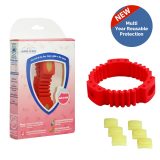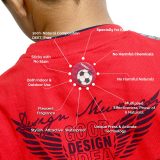Mealtime Magic: Introducing Solids and Navigating Baby’s Nutrition
Introduction
Bringing your baby into the world is a joyous occasion, marked by their growth and development. A significant milestone in this journey is the transition from a milk-based diet to solid foods. This period, known as weaning, is both exciting and challenging. Ensuring that your baby receives the right nutrients, experiences new tastes, and establishes healthy eating habits is crucial. In this article, we’ll explore the ins and outs of mealtime magic: introducing solids and navigating your baby’s nutrition.
Mealtime Magic: Introducing Solids and Navigating Baby’s Nutrition
Embarking on the journey of introducing solids to your baby can be a transformative experience. Watching them explore new textures, flavors, and sensations is not only heartwarming but also vital for their growth and development. During this stage, it’s essential to keep their nutritional needs at the forefront. Here are the key steps and considerations for a smooth transition:
1. Signs of Readiness
Before diving into solid foods, it’s essential to identify signs that your baby is ready. These signs may include good head control, the ability to sit up with support, showing interest in food, and a diminished tongue-thrust reflex.
2. Selecting the First Foods
Opt for single-grain iron-fortified baby cereal, pureed fruits, and vegetables as the initial foods. These are gentle on their developing digestive system and provide essential nutrients.
3. Introducing One Food at a Time
Introduce new foods one at a time, spacing them a few days apart. This practice helps identify any allergies or sensitivities your baby might have.
4. Gradual Texture Progression
Start with smooth purees and gradually progress to thicker textures and finely chopped foods. This progression hones their chewing and swallowing abilities.
5. The Role of Breast Milk/Formula
Remember that breast milk or formula remains the primary source of nutrition during the first year. Solid foods are a complement, gradually taking on a more significant role as your baby grows.
6. Nutrient-Rich Options
Incorporate a variety of nutrient-rich foods to provide a balanced diet. Include options like lean proteins, whole grains, and a rainbow of fruits and vegetables to ensure they receive a wide range of vitamins and minerals.
7. Dealing with Picky Eating
Picky eating is common among toddlers. Encourage a positive mealtime environment and offer a variety of foods to expand their palate. Avoid pressuring them to eat or making mealtimes stressful.
8. Allergy Awareness
Be vigilant about potential allergens like nuts, dairy, and eggs. Introduce these foods individually and consult your pediatrician if you have a family history of allergies.
9. Staying Hydrated
As solids become a regular part of their diet, offer water in a sippy cup to keep your baby hydrated. Limit fruit juices, as they can be high in sugar.
10. Transitioning to Table Foods
Around their first birthday, your baby will likely be ready for table foods. Offer small, bite-sized pieces of the family meal to encourage independent eating.
FAQs
Q: When should I start introducing solids? A: Signs of readiness typically emerge around 6 months. However, consult your pediatrician for personalized guidance.
Q: How can I prevent allergies? A: Introduce potential allergens one at a time, and monitor your baby closely for any adverse reactions.
Q: What if my baby refuses to eat? A: It’s common for babies to be hesitant about new foods. Be patient and continue offering a variety of options.
Q: Can I make my own baby food? A: Absolutely! Homemade baby food can be a nutritious and cost-effective option. Just ensure proper hygiene and age-appropriate textures.
Q: Should I follow a specific feeding schedule? A: While a routine can be helpful, be flexible and responsive to your baby’s hunger cues.
Q: How can I encourage healthy eating habits? A: Create a positive mealtime atmosphere, model healthy eating, and offer a variety of nutritious foods.
Conclusion
The journey of introducing solids and navigating your baby’s nutrition is an exciting adventure. It’s a time to foster healthy eating habits, expand their palate, and enjoy the magic of watching them discover new foods. By following the steps outlined in this guide, you’ll be well-equipped to provide a nutritious and delightful mealtime experience for your little one.
Remember, each baby is unique, so trust your instincts and consult your pediatrician for personalized guidance along the way.















